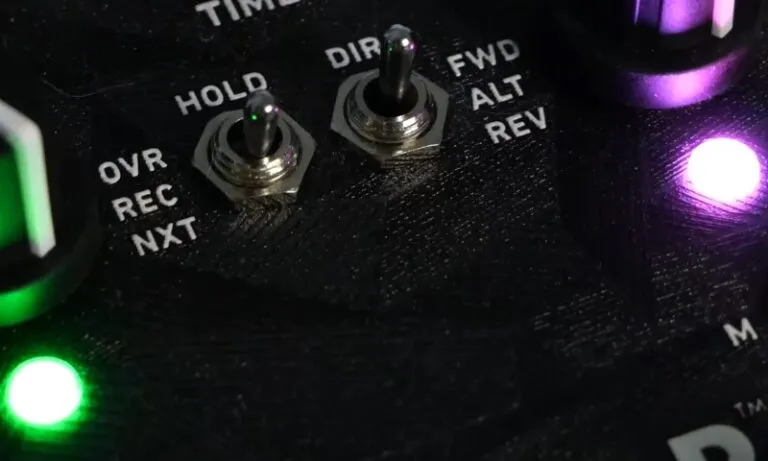The knowledge that music is a universal language is pretty widespread. However, have you ever stopped to think about its impact on every sector of your life?
Well, if you haven’t but are curious to learn more, keep reading as we’ll discuss it more in detail below.
Table of Contents
ToggleThe Importance of Music in Gaming- Blackjack And Beyond
Music tends to be found as a soundtrack in movies and TV shows to convey underlying emotions and showcase current or expected situations in an auditory way. However, this is not the only sector that uses music in such a way – gaming is another sector that uses this heavily.
For instance, imagine that you’ve opted to play blackjack at CafeCasino, instead of going to a brick-and-mortar establishment. On this occasion, it doesn’t matter which variant of this table game you go for, be it the Classic Single Deck Blackjack, Perfect Pairs, or 21 Burn Blackjack.
Every single option has a soundtrack added, along with aural effects that replicate the noises of cards being shuffled, chips being stacked, and more. And this goes for the PC, tablet, and mobile versions of these games.
All of this paired with high-quality visuals creates the perfect immersive experience, allowing you to feel as if this is happening not on your screen, but in real life. This hyper-realistic bubble however can be popped if you remove the musical factor. Not only does it make it easier for you to be distracted by external factors, but it simply lacks a certain je ne sais quoi.
Music at Work
We’ve all had days where work just feels endless. Your energy is low, the clock seems frozen, and motivation is nowhere to be found. On days like these, I turn to music, and I bet many of you do, too. Research actually supports this – certain types of music can help improve concentration and make repetitive tasks more enjoyable. And that’s not all.
As stated by the University of Central Florida, music also enhances cognitive and motor skills, which will definitely help you achieve better results.
“Usually in the late stages, Alzheimer’s patients are unresponsive,” says Kiminobu Sugaya – a UCF professor and neuroscientist . “But once you put in the headphones that play [their favorite] music, their eyes light up. They start moving and sometimes singing. The effect lasts maybe 10 minutes or so even after you turn off the music.”
How Different Genres Affect Focus
- Classical music: Often hailed as the go-to genre for focus, classical music is known for its calming qualities. It has no lyrics, which makes it less distracting, and the soft, rhythmic structure can help keep your mind clear.
- Instrumental jazz or lo-fi: For those who find classical a bit too formal, lo-fi or instrumental jazz offers a chill vibe with a soft beat that keeps energy levels steady without interrupting thought processes.
- Ambient and nature sounds: This category might not be “music” in the traditional sense, but ambient sounds can be soothing. They’re great for people who need a noise buffer to drown out distractions without lyrics.
Physical Activity
Think about the last time you went to the gym. There’s a good chance you had headphones in, listening to something that pushed you to lift that extra weight or run that extra mile. Music has an almost hypnotic effect on physical performance. It’s like a coach in your ear, motivating you to keep going, to do just one more rep, to push a bit harder.
According to NCBI, studies show that upbeat, high-tempo music can elevate heart rates and increase endurance during physical activity. Here’s why:
- It distracts from fatigue: Faster beats can divert attention away from tiredness, making the activity feel easier.
- Sets a rhythm: Music with a consistent tempo can help set a pace, especially for running or cycling.
- Elevates mood: Happy, energetic songs elevate the mood, which can make challenging workouts feel more enjoyable.
How to Choose the Right Playlist
Start with the BPM
One of the best ways to optimize a workout playlist is to pick songs based on their BPM (beats per minute). BPM essentially measures the tempo of a song, and choosing the right BPM can keep you on pace and aligned with your physical effort.
Here’s how to think about BPM for different types of workouts:
| Workout Phase | BPM Range | Description | Suggested Tracks |
|---|---|---|---|
| Warm-Up | 100–120 BPM | Moderate beats to gradually raise the heart rate. Suitable for stretching and gentle movement, setting a positive, relaxed tone. |
|
| Cardio and HIIT | 120–160+ BPM | Fast-paced rhythm for high-energy movements like running, cycling, or interval training. Keeps momentum steady and motivation high. |
|
| Strength Training | 110–140 BPM | Steady rhythm is ideal for weight lifting or circuit training. Rock, hip-hop, and EDM tracks provide focus and intensity without rushing. |
|
| Cool Down | 80–100 BPM | Calming songs ease into recovery, relax muscles, and bring down heart rate gradually. Perfect for stretching and gentle relaxation post-workout. |
|
Mix Up the Genres to Avoid Boredom
Listening to the same genre on repeat can lead to monotony, especially during longer workouts. Try to blend various genres, such as pop, rock, EDM, and even classic anthems, to keep the playlist dynamic and engaging.
Some Genre Ideas to Try:
- Pop: Great for high-energy, upbeat sounds that are familiar and easy to sing along to in your head.
- EDM: Perfect for high-intensity sessions, with steady beats and drops that can fuel sprints or power sets.
- Rock and Metal: Offers grit and intensity for strength training, with powerful riffs and bold vocals.
- Hip-Hop and Rap: Strong beats with motivating lyrics, ideal for pushing through challenging sections of your workout.
Music as Therapy
When words don’t come easily, music helps us process emotions in ways regular conversations sometimes can’t. It’s fascinating how music can evoke memories, take us back to a specific moment, or simply soothe a troubled mind. In many ways, it’s our silent therapist, guiding us through complex feelings.
Music therapy is a recognized field that uses sound to improve mental health and well-being. According to Cleveland Clinic, music therapy can help you:
- Reduce stress and anxiety: Certain melodies and rhythms have a relaxing effect, helping to ease the symptoms of stress and anxiety.
- Helping with grief: Music can be a safe way to process loss, allowing a person to explore and release emotions at their own pace.
- Boost self-expression: For those who struggle to voice their feelings, music can serve as a form of expression.
Bringing People Together Through Music
One of the best things about music is its ability to connect people. From concerts to spontaneous jam sessions, music creates a shared experience. It’s a universal language, one that breaks down barriers and brings people from different backgrounds together.
Think about festivals, house parties, weddings – these events wouldn’t be the same without music. Music sets the tone, helps create memories, and makes us feel like part of something bigger.
Music for Relaxation
When life gets overwhelming, music is often the first thing we turn to for comfort. After a stressful day, nothing feels quite like unwinding with calming tunes that help us let go of the day’s worries.
There’s something inherently relaxing about putting on a soft, slow song and just letting the music wash over you.
Creating a Calm Space with Music
If you’re looking to make music a part of your relaxation routine, here are some ideas:
- Meditative music or binaural beats: Binaural beats are said to enhance meditation and relaxation by creating sound frequencies that promote calmness.
- Acoustic or folk music: Something about acoustic sounds or the simplicity of folk music feels grounding, perfect for moments of quiet reflection.
- Slow-tempo ballads: Ballads often evoke strong emotions but can also provide a sense of comfort, making them great for unwinding.
Music for Creativity
Music is like fuel for creativity. It taps into the part of the brain responsible for imagination, often helping ideas flow more freely.
Many writers, artists, and creators swear by music as a muse, claiming it helps them break through creative blocks and access new ideas.
| Type of Music | Why it Works | Best For | Examples |
|---|---|---|---|
| Ambient and Instrumental Music | No lyrics, minimizing distractions and allowing the brain to focus on problem-solving and idea generation. | Writing, brainstorming, abstract thinking | Ambient artists like Brian Eno, instrumental jazz by Miles Davis |
| Classical Music and Baroque | Steady, structured rhythms improve concentration and mental clarity by engaging both hemispheres of the brain. | Complex, detailed work or tasks requiring sustained focus | Pieces by Bach, Vivaldi, or Mozart |
| Lo-fi Beats for Relaxed Creativity | Mellow, repetitive beats reduce stress and create a relaxed environment, fostering intuitive, creative thoughts. | Casual creative work like doodling, sketching, early brainstorming | Lo-fi playlists like “Lo-fi Beats to Study/Chill to” on streaming platforms |
| Upbeat Pop or Rock for Energy and Motivation | Fast-paced songs release dopamine, boosting motivation and enthusiasm, which helps overcome creative blocks. | High-energy tasks like brainstorming sessions, creative sprints | Songs by The Beatles, Queen, or pop artists like Jorja Smith |
| Experimental and World Music for Inspiration | Unfamiliar sounds stimulate new brain connections, sparking fresh ideas and offering novel auditory experiences. | Breaking creative ruts, exploring new directions | World music by Ravi Shankar, experimental tracks by Radiohead |
To Wrap Things Up
In a way, our lives are made up of different seasons, and music has its place in each one. From our childhood lullabies to our teenage anthems, from wedding songs to lullabies sung to our own children – music is always there, marking significant milestones.
Music doesn’t just adapt to our lives; it enhances them. It’s there to lift us up, bring us together, calm us down, and push us forward. Life, in all its beauty and messiness, feels a little more complete with music by our side.
Sources
1. NCBI – Effect of music tempo on exercise performance and heart rate among young adults
2. UCF – Your Brain On Music
3. Cleveland Clinic – Music Therapy
Related Posts:
- How to Plan Every Aspect of a Concert - From Setup…
- Role of Music in Teen Development - Identity,…
- How Do You Play Classico Tenacious D on Guitar? -…
- How to Play the D7 Guitar Chord - A Beginner’s Guide
- Top 10 Music Streaming Platforms Every Young Artist…
- How to Create a Unique Music Video - Fresh Ideas for…













